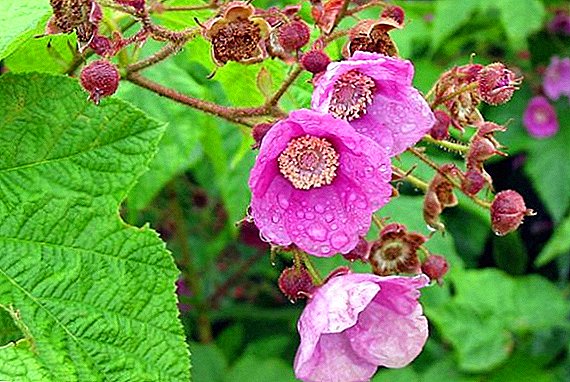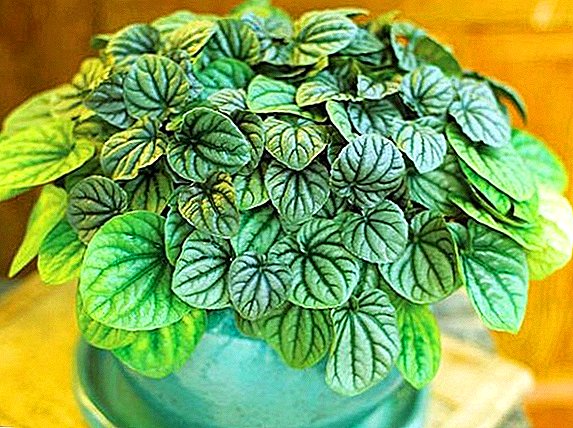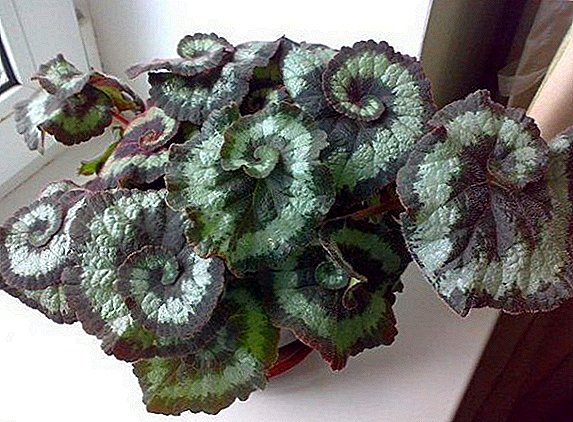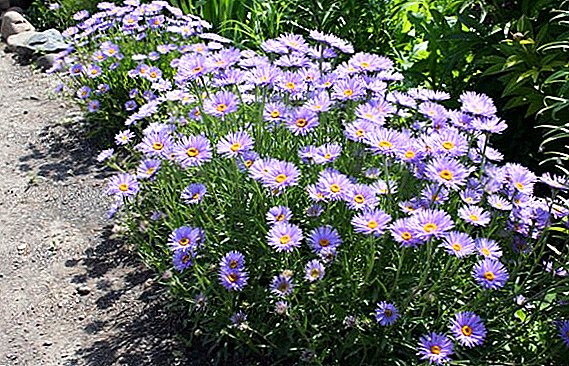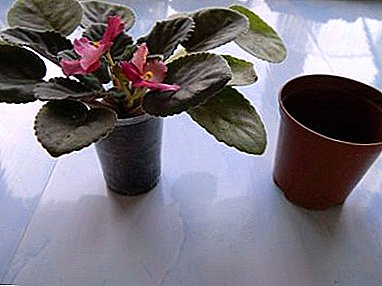
Violet, or as it is called, Saintpaulia, is very popular among gardeners. These flowers are pleased with their beauty and touching, and, unfortunately, are quite demanding in their content.
Today we will look at the peculiarities of the violet transplant procedure: what are the ways, how to carry them out correctly, what soil and utensils are needed for this. You will learn how to care for a transplanted flower and what difficulties may arise. You can also watch a useful video on this topic.
Transplant at home
During violet transplanting, it is important to maintain optimal conditions.. The air temperature in the room should be 20-25 degrees above zero, the relative humidity of about 40-50%. The most optimal time of the year is spring, when the plant has enough sunlight and it is full of energy. If you repot violet in winter, you will need to take care of an additional source of lighting so that the plant does not wither in a new pot.
Transshipment
This method is preferred in the case when the plant is urgently needed to transplant. Consider the steps:
 Violet is extracted carefully from the old pot, keeping the entire soil room.
Violet is extracted carefully from the old pot, keeping the entire soil room.- Approximately 1/3 of the pot is filled with drainage material, then around the middle a new pot is placed, and the resulting space between the pots is filled with new soil and gently tamped with it.
- After that, the old pot is removed, and in its place planted violet. The level of old and new soil with this method of planting should be the same.
We recommend to watch the video about the correct handling of violets:
Full replacement
The method of transplanting a flower using a replacement is suitable in cases when it is necessary to completely replace the soil. For this you need:
- Violet cleaned from rotting roots and old shoots, and sprinkle them with powdered charcoal.
- At the bottom of the new pot lay out drainage, then a hill of new soil, and carefully plant the plant.
We recommend to watch a video about the correct transplant of violets with the replacement of the soil:
Partial replacement
This method is used in the case of a planned transplant of a small violet. The method involves a partial update of the soil. The flower is carefully removed from the pot, slightly shaken off the soil and planted in a new one. Also this method is used when it is necessary to plant a plant.
How to carry out the procedure?
Soil preparation
It is recommended to buy the soil in the store, otherwise there is a risk of infecting the plant with diseases. If it is not possible to take it in the store, but it is necessary to disarm the land: it is necessary to steam it and fertilize it with a solution of potassium permanganate.
Soil composition:
- River sand - ½ volume.
- Coniferous land - 1 volume.
- Crushed moss - 1 vol.
- Leaf ground - 1 volume.
- Sodland - 2 volumes.
Board: Claydite, brick chips, pottery shards or moss can be used as drainage. For young plants (up to 6 months), drainage should occupy 1/3 of the pot, for adults - ¼ of the pot.
Fertilizers
 Usually, when transplanting, it is not recommended to add fertilizers, because if the soil is prepared correctly, it already contains all the necessary nutritional elements. But during preparation, the soil can be slightly “revived” by adding the Baikal EM-1 microbiological fertilizer 14 days before the transplant. "Baikal EM-1" is mixed in a ratio of 1 to 100.
Usually, when transplanting, it is not recommended to add fertilizers, because if the soil is prepared correctly, it already contains all the necessary nutritional elements. But during preparation, the soil can be slightly “revived” by adding the Baikal EM-1 microbiological fertilizer 14 days before the transplant. "Baikal EM-1" is mixed in a ratio of 1 to 100.
You can also add to the new soil during the transplant "Fitosporin-M". First, it will be necessary to prepare a liquid concentrate from it, according to the instructions, and then dilute the resulting concentrate in a ratio of 1 ml to 2 liters of water, and moisten the soil with them before transplanting.
Just directly before the transplant, you can add a little biohumus, charcoal or coconut substrate.
Dishes
As a container for transplanting, you can choose a plastic or ceramic pot, a container. Clay pot contains pores, because of which the earth clod dries faster.
The dishes should be wide, the diameter of the dishes should be 1.5-2 times its height. The diameter should be 2-3 times smaller than the plant itself. There must be holes for drainage.
We recommend to watch a video about choosing a pot for violets:
Getting planting material
Before you transplant a flower, you need to prepare it.. The soil will need to be moistened so that the flower can be easily removed from the pot along with a lump. The roots are cleaned from the ground and cut out damaged. With strongly overgrown roots, about 2/3 of the parts can be removed, and the plant will not be harmed.
If the flower needs to be rejuvenated, then this will have to remove not only a part of the roots, but also a part of the leaves. When rejuvenating, transplant plants into a smaller pot. You can also rejuvenate the plant by cutting off the roots along with a column and withered leaves. At the same time when cutting use a sharp disinfected knife. The remaining upper part is allowed in a glass of water, and, waiting for the formation of a good root system, they are transplanted into a pot.
Growing from a leaf
It is possible to receive landing material by means of reproduction by leaf:
 To do this, you will need to select healthy, elastic leaves that are in the second or third row from the outlet.
To do this, you will need to select healthy, elastic leaves that are in the second or third row from the outlet.- These leaves are cut with a sharp disinfected knife, dried for 15 minutes and sprinkled with charcoal.
- Then cool boiled water is poured into a dark plastic cup and dissolved in it a tablet of activated charcoal.
- Then the leaf stalk is immersed there not more than 1 cm.
- Replant received planting material will be possible after the roots on the cut will be longer than 1 cm.
We recommend to watch a video about growing violets from a leaf:
All detailed information on growing violets can be found in a separate article.
Features of the process and subsequent care
There are a number of rules, according to which it is necessary to repot violet.:
- The container before the transfer must be thoroughly rinsed with water, regardless of whether it was previously used or not. In this case, the dishes should be properly selected. The best material for utensils is plastic.
- With the proper transplant of senpolia, its lower leaves should touch the ground.
- Do not water the violet immediately after disembarkation. This can lead to rotting of the root system. To preserve the moisture of the soil, you need to cover it with a transparent plastic bag.
- It is advisable not to neglect the plant rejuvenation procedures in the process of transplantation. In order for the violet to take root quickly and painlessly, it is also necessary to properly care for it the first time after transplantation.
For this you need:
- To ensure normal growth, it is necessary in the room in which the transplanted violet is located to maintain moderate humidity (approximately 50%) and temperature above 21 degrees Celsius.
- Light day should be at least 10 hours.
- It is necessary to protect the flower from sudden changes in temperature and drafts.
- Watering should be carefully and in moderation. Do not spray the leaves.
- After 2-3 weeks, you can begin to introduce supplements, first in small doses, and then gradually increase to the norm.
On the features of care for this beauty, you can read in our article.
Is it possible to carry out the procedure with a flowering plant?
If blooming buds appeared on the violet, then transplantation is undesirable.. The presence of flowering buds just says that the plant feels great. Replace it will be possible after it has faded.
However, there are emergency cases when it is necessary to replant a flowering plant in order to save it. In this case, for transplantation, you can use the method of transshipment, pre-cut all the buds.
We recommend to watch the video about whether it is possible to replant a blooming violet:
Possible problems
 Rotting flower. After transplanting violets, some growers notice that the plant has begun an active process of decay. This may be due to:
Rotting flower. After transplanting violets, some growers notice that the plant has begun an active process of decay. This may be due to:- The presence of parasites in the soil, low quality soil.
- Damage to the plant during transplantation.
- Overly abundant watering.
In this case, treatment should be urgent and cardinal: all damaged parts must be removed and the violet must be rooted using a healthy leaf.
- The leaves turn yellow and dry. It would seem that after transplanting a violet in the new soil should become more beautiful and healthy, but on the leaves it begins to appear bright or yellow spots, or the leaves begin to dry out. The reasons may be:
- Incorrectly selected soil.
- Poor pot location.
- Non-observance of the mode of watering after change.
In the first case, transplanting into the "correct" soil will help, in the second and third, compliance with the rules of plant care will help.
- Does not bloom. Causes of this problem:
- When transplanting was chosen too large dishes.
- Incorrectly picked up soil.
- The transplant was carried out in winter.
- Damage to the measles system.
Prompt elimination of the causes will lead to the long-awaited budding.
Conclusion
In this way, The violet transplant process is fairly simple.. It is only necessary to comply with the conditions of transplantation, choose the right dishes and soil, as well as follow the rules of plant care after transplantation. All this helps to avoid problems such as rotting the plant, measuring the color of the leaves or drying the plant.


 Violet is extracted carefully from the old pot, keeping the entire soil room.
Violet is extracted carefully from the old pot, keeping the entire soil room. To do this, you will need to select healthy, elastic leaves that are in the second or third row from the outlet.
To do this, you will need to select healthy, elastic leaves that are in the second or third row from the outlet. Rotting flower. After transplanting violets, some growers notice that the plant has begun an active process of decay. This may be due to:
Rotting flower. After transplanting violets, some growers notice that the plant has begun an active process of decay. This may be due to: